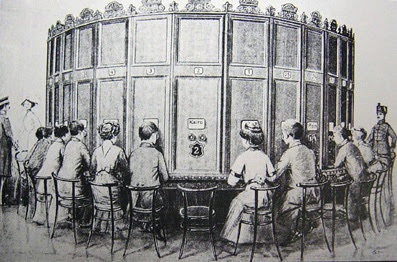Around 1880 an Austrian scientist invented a machine which allowed you to travel the world for a penny.
The Fotoplastikon sent stereoscopic photos around a circular sphere and illuminated them from behind, creating a genuine 3D impression.
 |
| The Swiss Alps - Monte Rossa, 1901 |
In times where both photography and travelling was only for the privileged few, the invention proved a huge success. By 1910 the machines operated in 250 European cities, circulating 100,000 different photos.
Since then, mass travelling and mass photography have transformed - and arguably banalised - the way we perceive the world. I didn't expect much yesterday when I went to the only remaining Fotoplastikon, operating in Warsaw since 1901. I was pleasantly surprised. The whole thing felt like a 3D journey in time, making me think that the past may itself be a precious place that we can travel to. Some may say that's just another example of the vintage fetishism that nurtures our nostalgia for things gone. So what, I say.
 |
| The Filipino Revolt, 1900 |
 |
| Dutch fishing family on the island of Markham, 1894 |
 |
| The Warsaw Opera, 1905 |





